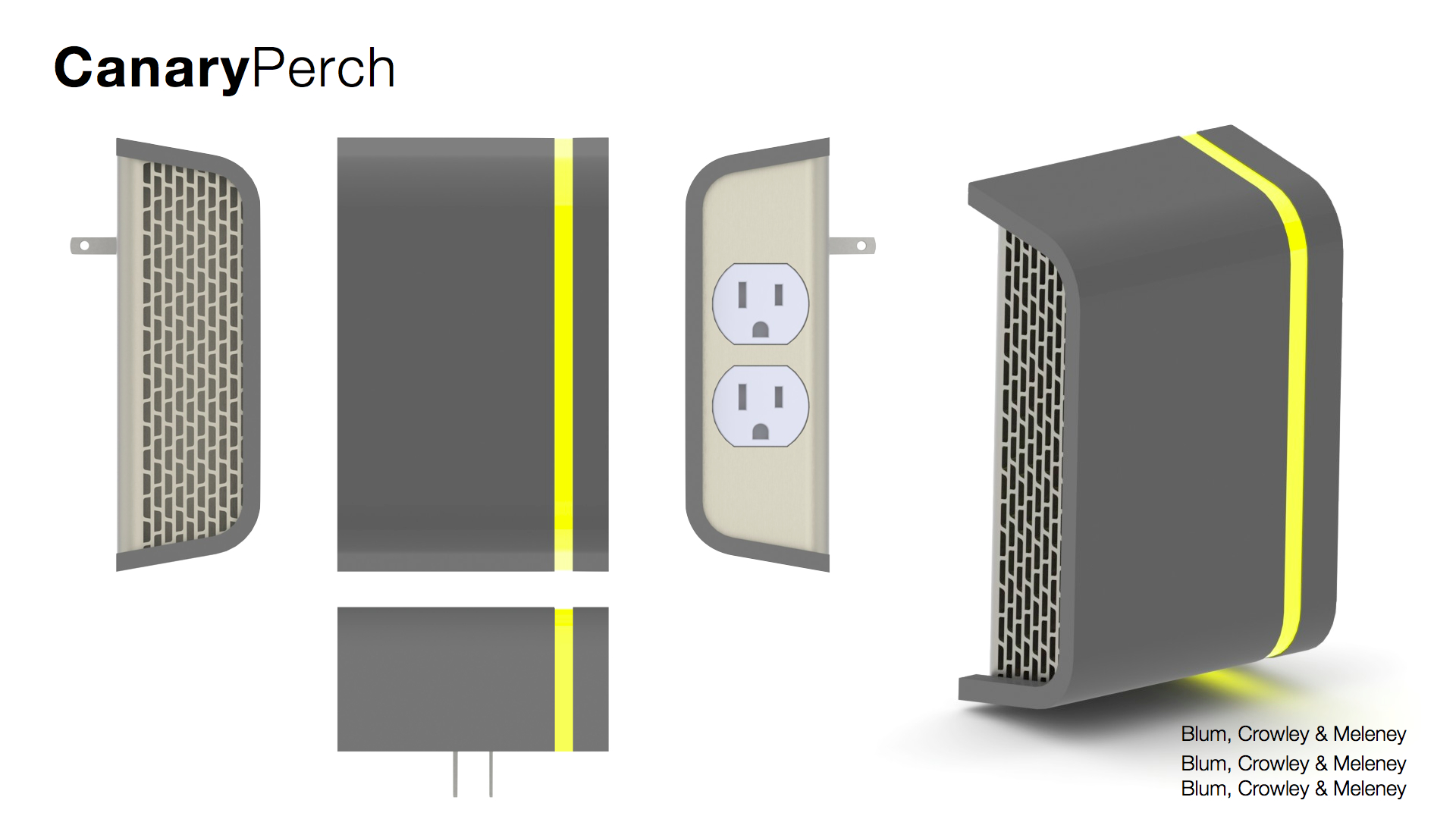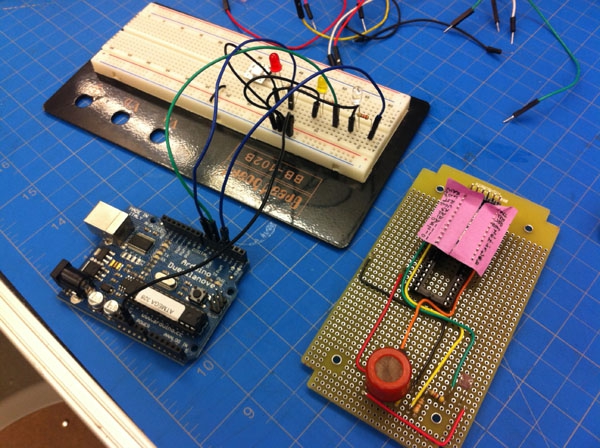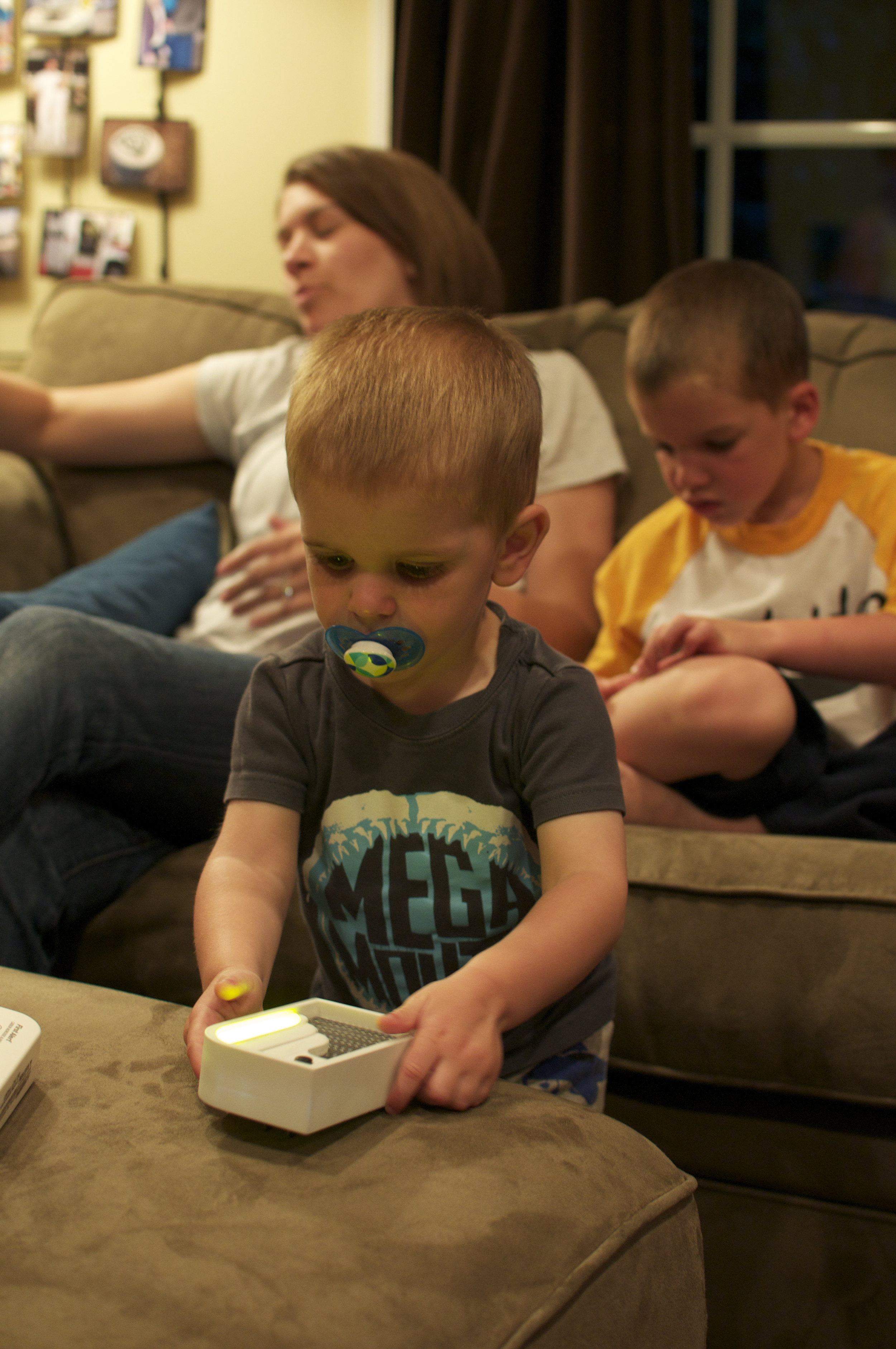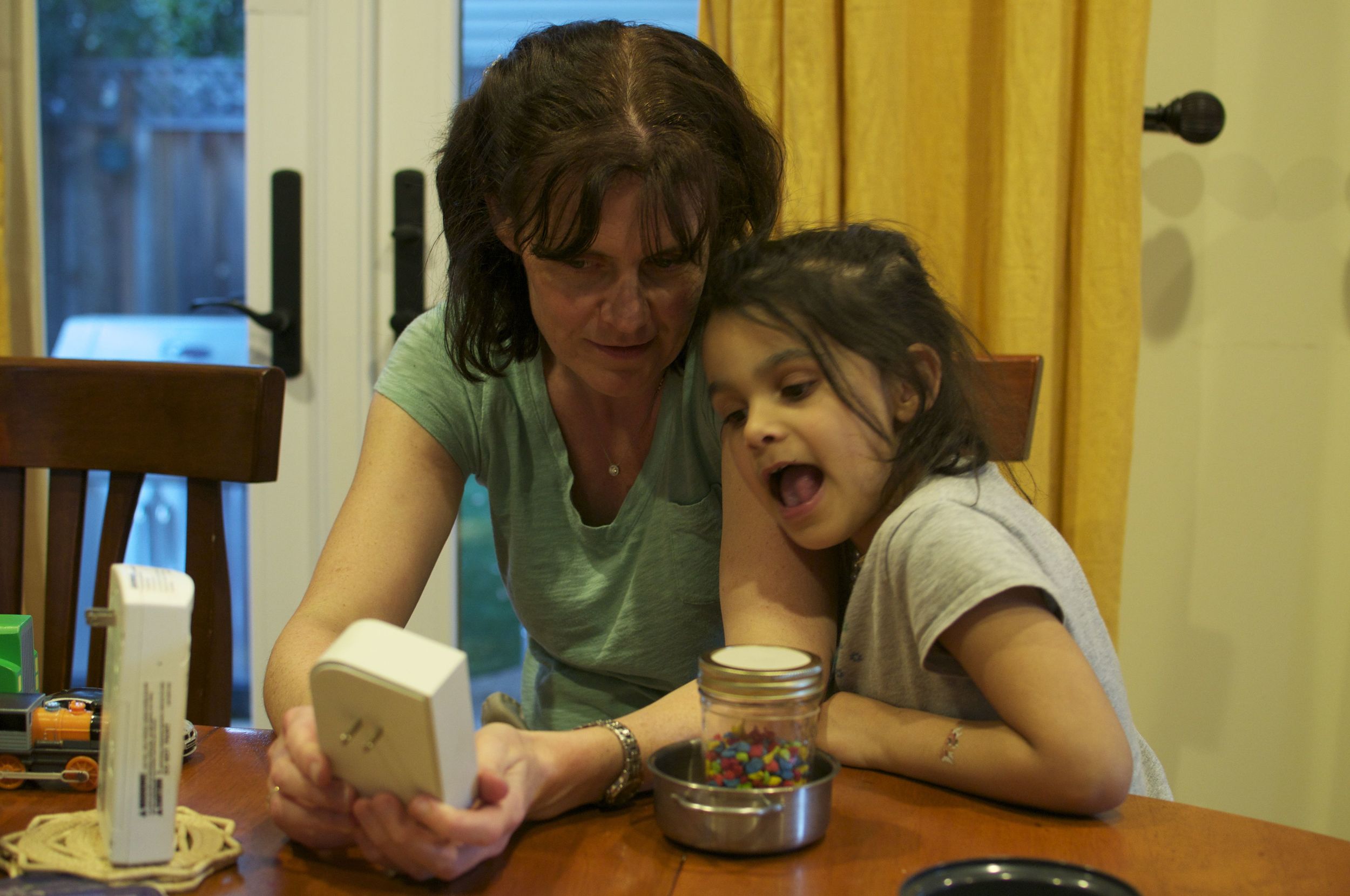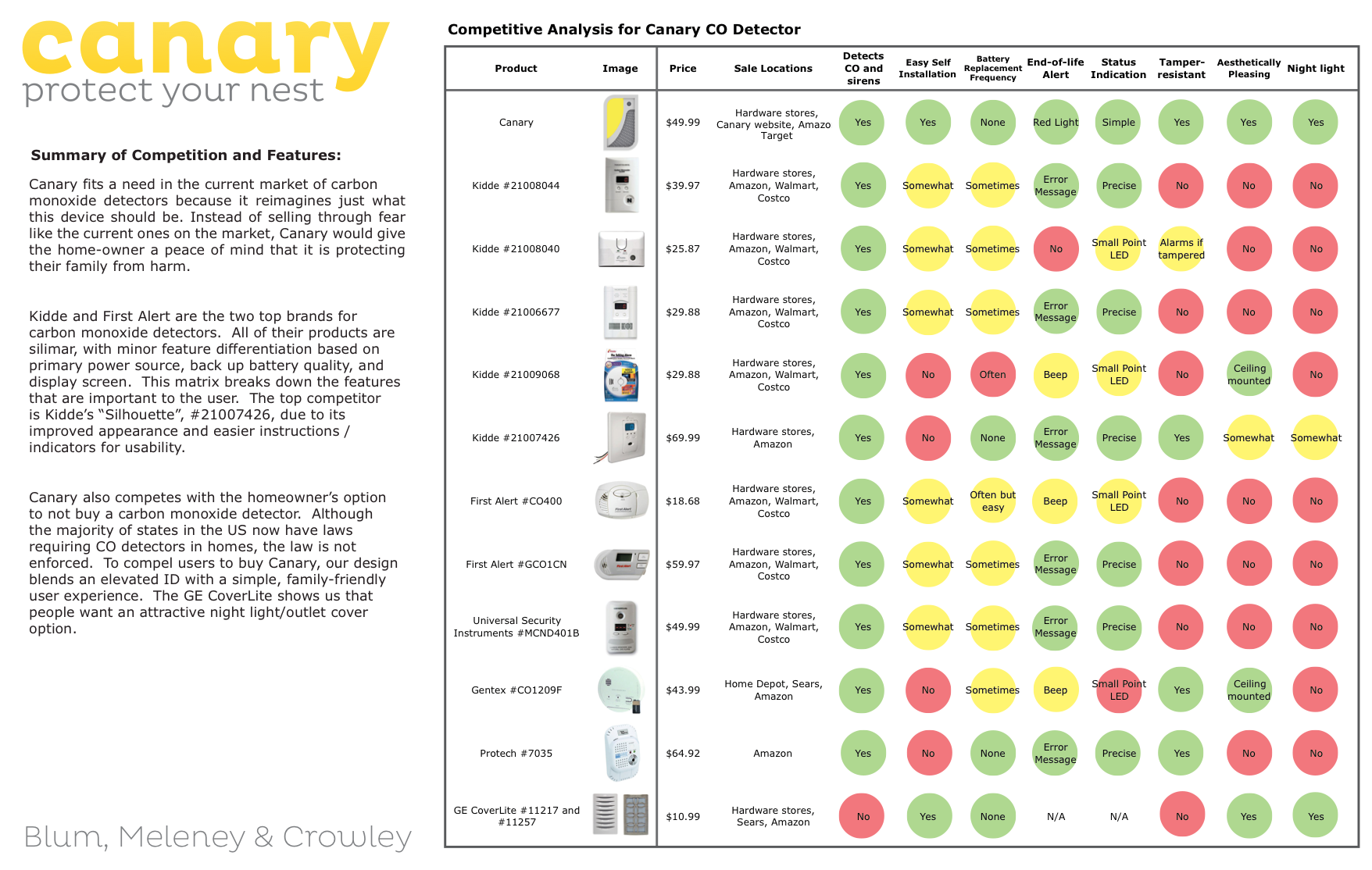Concept:
Up until the mid-20th century, coal miners would carry caged canaries with them into the mines. The tiny yellow birds’ heightened sensitivity to noxious gases allowed them to warn to the miners of impending danger.
Our goal with Canary was to bring simplicity and comfort to something that so far has only been sold through both fear and mandate. Canary takes on a responsibility. It crosses a task off your list; it protects the ones you love. Canary looks after your nest.
Features:
Constantly samples the air for Carbon Monoxide and reports with sound, light and a text message
Secure installation and locking mechanism to prevent tampering or removal by children
Smart test and report that lets you know when it's time to replace Canary simply by waving at the device
Doubles as a nightlight to serve as a warm reminder of its functionality
An early rending of the canary project
The novel installation mechanism that we created that allows simple plug-and-play use while also preventing tampering with from children or pets.
Research:
The flyer that was sent out to the surrounding neighborhoods and to craigslist.
Our initial goal was to understand the family household and how a carbon monoxide detector fits into the house. We interviewed dozens of families, watched how they interacted with their devices, and just where the pain points were. We soon realized that a major problem was just how opaque the device's functionality was to the people that were relying on it.
Synthesis:
Through our research and discussions with families we distilled our research into three key insights we wanted Canary to enable:
Ease of use & understandability
Protection from tampering & removal
Peace of mind
Design:
When coming up with the industrial design for the product we wanted to make something that both disappeared into the background while also being something approachable and less ugly than everything else on the market. Since these were going to be installed in children's bedrooms they needed to welcoming but tamper proof as well.
Prototyping:
Quick prototypes to test various interactions, hypotheses and designs. The use of 3D printing, breadboards, CAD renderings and clay models were critical in us ideating, testing and making decisions. I did all of the embedded electronics work surrounding the interaction of the CO detector, the lighting and interface with the outside world.
“People are afraid of their carbon monoxide detector. They shouldn’t be.”
Final Prototype:
After a lot of testing, burnt boards, cans of paint and 3D printing we had a final functioning prototype that we could show off. We went back to a few of our families homes and let them test it out, compare it and give their feedback. The response was overwhelmingly positive and it was a huge vote of confidence that the product would be successful.
Design for Manufacturability
Because we wanted to potentially make this into a Kickstarter project we spent a good amount of time working on the true manufacturability and feasibility of Canary as a shippable product. We work on tooling design, board fabrication, material selection, UL certification requirements and a FATP solution. All of these preparations actually provided us with the ability to launch a Kickstarter project with a very full understanding of the costs and schedule.
Branding and Packaging:
I created the branding and packaging for the product that presented the simplicity, beauty and security the device provided. The focus was on making something we could use as both an icon and a product descriptor.




